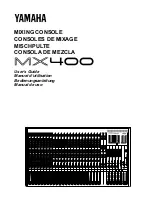
Manual for Induction Motors and Generators
118 -
Recycling
3BFP 000 050 R0101 REV E
10.4 Dismantling of the machine
Dismantling the machine is a basic procedure as it is assembled with bolts. However, due to the
weight, it requires an operator trained in handling heavy components to prevent dangerous
situations.
10.5 Separation of different materials
10.5.1 Frame, bearing housing, covers and fan
These parts are made of structural steel, which can be recycled according to local instructions.
All the auxiliary equipment, cabling as well as bearings have to be removed before melting the
material.
10.5.2 Components with electrical insulation
The stator and the rotor are the main components, which include electrical insulation materials.
There are, however, auxiliary components which are constructed of similar materials and which
are hence dealt with in the same manner. This includes various insulators used in the terminal
box, exciter, voltage and current transformers, power cables, instrumentation wires, surge
arrestors and capacitors. Some of these components are used only in synchronous machines and
some are used only in a very limited number of machines.
All these components are in an inert stage once the manufacturing of the machine has been
completed. Some components, in particular the stator and the rotor, contain a considerable
amount of copper which can be separated in a proper heat treatment process, where the organic
binder materials of the electrical insulation are gasified. To ensure a proper burning of the
fumes, the oven shall include a suitable after burning unit. The following conditions are
recommended for the heat treatment and for the after burning to minimize the emissions from
the process:
Heat treatment
Temperature:
380-420°C (716...788°F)
Duration:
After obtaining 90% of the target temperature, the object shall stay a
minimum of five hours at this temperature
After burning of the binder fumes
Temperature:
850-920°C (1562-1688°F)
Flow rate:
The binder fumes shall stay a minimum of three seconds in the burning
chamber
NOTE: The emission consists mainly of O
2
-, CO-, CO
2
-, NO
x
-, C
x
H
y
-gases and microscopic
particles. It is on the user's responsibility to ensure that the process complies with the
local legislation.
NOTE: The heat treatment process and the maintenance of the heat treatment equipment
require special care in order to avoid any risk for fire hazards or explosions. Due to
various installations used for the purpose it is not possible for ABB to give detailed















































